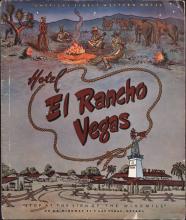Welcome to Menus: The Art of Dining
On behalf of the entire Project Team who worked on this project at the University Libraries, I would like to welcome you to our newest digital collection.
You may ask, “Why menus?” The goal of this project is to share a rich cultural resource that has had limited exposure and use despite its fascinating content and research potential. Besides being a collection of artistic beauty, these historic menus are also a rich source of information about an important aspect of our everyday lives. As noted by eminent historian and former Director of the New York Public Library, Vartan Gregorian:
“Menus reflect in sometimes curious ways people’s esthetics and their diets, eating habits, and, perhaps, temperaments. They give us an insight into the social and economic classes of society as well as trends and styles of food service. They present a picture in miniature of the history of food, as well as of the social history of a people.” (From Classic Menu Design, from the Collection of the New York Public Library by Reynaldo Aljandro)

With the encouragement and support of the UNLV School of Hotel Administration, the Special Collections at UNLV’s University Libraries has built a strong local and regional culinary collection, adding menus from Las Vegas and Nevada restaurants as well as menus from winners of the National Restaurant Association’s “Menu Idea Exchange,” and from recognized award winning restaurants across the country. Private menu collections were also received from noted local restaurateurs, chefs, food critics and authors. Notable donors have been Muriel Stevens, noted columnist and food editor for the Las Vegas Sun newspaper, who also hosted celebrity food programs on local television and radio, and Vern Lanegrasse, the “Hollywood Chef”, a Los Angeles food columnist, radio, and television host.
The UNLV Menu Collection reflects a wide spectrum of dining including: dining on trains and ships, gourmet restaurants and notable hotels, special events and holidays. Many of the menus are made in a variety of special constructions, with interesting graphic elements and exotic and unusual materials.
Menus, like book covers, are works of design and art and are primary sources for students of art and design, commercial artists and designers, restaurateurs, and hotel/hospitality programs and schools. They are designed to appeal and attract, and to invite and promote dining, fine or otherwise. Sometimes taken for granted, they are an important part of our cultural life.
Other large digital menu collections have been created by prestigious organizations such as:
These have proven popular and are a valuable resource attracting new users across disciplines. The digital environment is a valuable new way to highlight collections previously known only to a few collectors. Menus: The Art of Dining provides robust searching and browsing access to two significant historic menu collections and over 1500 individual menus. We invite you to explore, enjoy, and interact with our newest digital collection!
